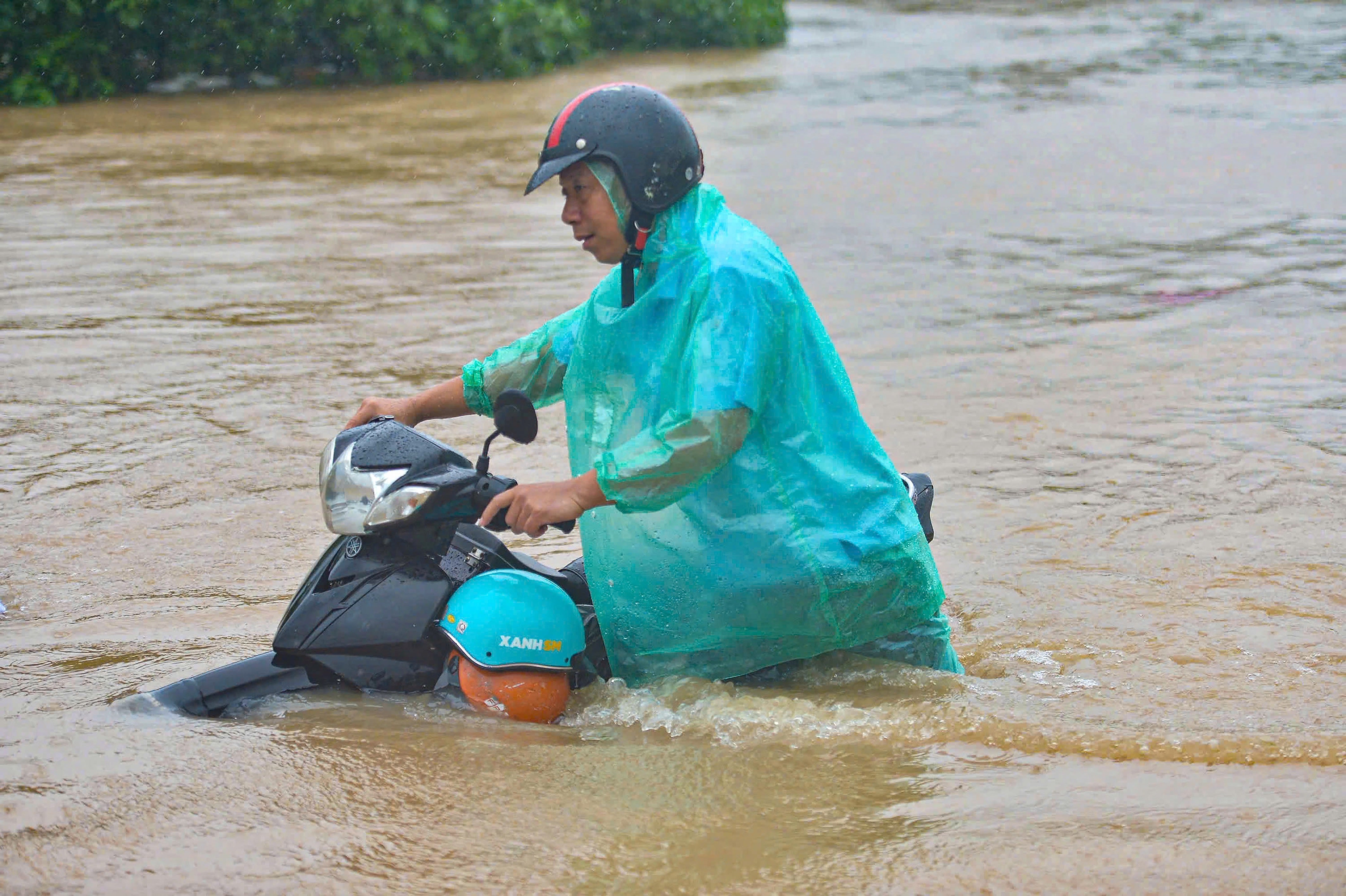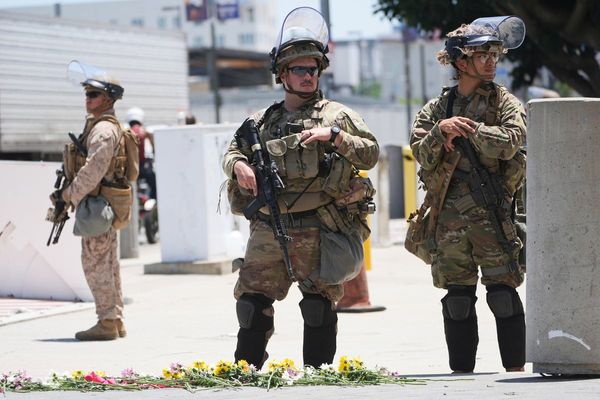
Three people died and at least 13 were injured after Typhoon Kajiki tore into Vietnam, toppling trees, flooding streets and knocking out power to more than 1.6 million people.
The victims included a 90-year-old man whose house collapsed in the rain and a man who was electrocuted while trying to secure his roof in Nghe An province, according to state media. Another man was killed in Ha Tinh province as the storm passed through.
Kajiki made landfall on Monday afternoon with winds of up to 130kmph. Some 7,000 houses were left damaged, 18,000 trees uprooted, and thousands of hectares of rice fields inundated just weeks before harvest. More than 300 electricity poles were brought down, leaving towns and villages without power across several provinces.
In Hanoi, downpours continued into Tuesday morning, turning wide boulevards into rivers. Cars were submerged up to the windshields, motorcyclists waded through waist-deep water and the largest lake spilled over its banks. Photos showed a car crushed by a fallen tree in the middle of a flooded road while families carried children and belongings through muddy water.
Villages in Bac Ninh and Nghe An provinces were cut off by flooding and landslides. In Thanh Hoa, waves reached three metres, smashing into sea walls and inundating coastal communities.
Authorities had evacuated more than 44,000 people ahead of the storm and deployed 16,500 soldiers and over 100,000 paramilitary personnel to support rescue operations.
Two regional airports, in Thanh Hoa and Quang Binh, remained closed on Tuesday for the second day. Train services in the north were suspended and schools in several provinces shut.

Kajiki weakened into a tropical depression as it moved into Laos on Tuesday but Vietnam’s weather agency warned that northern provinces could still receive up to 150mm of rain in six hours, raising the risk of flash floods and landslides.
The agriculture ministry said more than 100 people had already been killed or left missing in natural disasters this year. Last September, Typhoon Yagi killed more than 700 people across Vietnam, Laos, Thailand and Myanmar.
Authorities initially feared Kajiki might reach a similar scale but its rapid weakening limited further loss of life.
Vietnam’s long coastline makes it highly vulnerable to typhoons, which often bring deadly floods and landslides.
Scientists say that climate change is making storms more intense and unpredictable, with the impact increasingly felt in crowded cities as well as rural communities.







